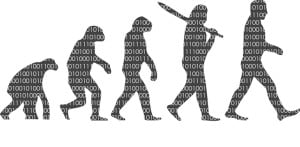Sarah Deshaies
CUP Quebec Bureau Chief
MONTREAL (CUP) — Imagine if all the hours you spent moving coloured blocks on Tetris or cultivating wheat on FarmVille actually led to something productive — terminal disease research, perhaps?
Two McGill University academics are tapping into our appreciation for simple video games in order to further research into illnesses like cancer, Alzheimer’s and diabetes.
Jérôme Waldispuhl and Mathieu Blanchette launched Phylo in November 2010, and 17,000 registered users have played the game since. Collectively, those users have produced information, which was released last December, that researchers can use to improve knowledge about genetic disorders.
Waldispuhl, who personally prefers games like Civilization, came up with the idea while playing games on his laptop as a break from work every few hours.
“I was asking myself, ‘How can I use this energy in these casual games to do something useful?”
 The computer scientist explained it like this: “Basically, solving a puzzle is solving a problem. If you can find the equivalence between the problem you’re solving in your puzzle, and another problem, you can re-use the solution to do something.”
The computer scientist explained it like this: “Basically, solving a puzzle is solving a problem. If you can find the equivalence between the problem you’re solving in your puzzle, and another problem, you can re-use the solution to do something.”
Playable on a computer or mobile device, Phylo is a simple, Tetris-like game in which players line up blocks in colours of orange, purple, blue and green. Each block represents a base of human DNA, and all the genetic information is sourced from the University of California, Santa Cruz Genome Browser.
A line of DNA blocks represents a genetic sequence. Underneath is a sequence from another species, and the goal is to line up blocks that are the same colour. When this happens, players are forming a genetic sequence alignment; in other words, they’re finding similar genetic regions from different species.
“The thing is that the sequence by itself doesn’t tell us a lot. What we need to understand from this genome — this DNA that we are sequencing — is to compare the DNA from a lot of different species in order to reveal a similarity between the different DNAs,” said Waldispuhl. As Phylo’s website explains, alignments help scientists trace the evolution of some genetic diseases. Each sequence in the game is thought to be linked to a genetic disorder.
“The goal of Phylo is to produce the data to make the comparisons of DNA easier,” explained Waldispuhl. Once you complete an alignment, it’s stored and fed back to the “global alignment.”
Meanwhile, you’ll get a message on your screen that goes something like this: “We appreciate your contribution to science: Congratulations! You’ve completed the final stage, and we just submitted your alignment for this session. You played level 902. The DNA in this puzzle has been linked to: familial arrythmogenic right ventricular dysplasia.”
Players have produced over 350,000 different alignment solutions over about 500,000 games since its launch. With each level taking about one to two minutes to play, Waldispuhl estimated that a beginner can produce a genetic alignment in 10 to 15 minutes.
The idea is that humans can do this sort of work better than computers. While the human genome itself is too large for a human to completely decode, a computer cannot be relied upon, either. Even completed algorithms designed to do this kind of work aren’t guaranteed to find all the alignments.
Humans are good at solving visual problems and recognizing patterns; Waldispuhl compares Phylo to the web application reCaptcha, which prompts you to type in distorted sequences of letters and numbers when you want to send information online. This prevents the spamming of websites, because as humans we can read the reCaptcha doodles while bots can’t. The process also helps digitize books: each reCaptcha you decipher in a matter of seconds is a piece of writing that their computers stumbled on.
GalaxyZoo is another example of human computing that is harnessing people power to improve science. Its 250,000 users help sort through a million images of galaxies produced by the Hubble telescope. By answering visual questions about an image, users have produced endless classifications that help scientists shape understanding of the cosmos.
In Phylo, the premise of the coloured blocks adapts the puzzle to be something that is relatively easy for us to work on. A human arranging an alignment is working on a jigsaw piece that’s part of a much larger puzzle — and having fun while doing it.
Most of Phylo’s thousands of players are located in North America, with others in Europe and Brazil. Media coverage has helped spread the word to India and Asia, as well.
Waldispuhl said that the game is also diversifying into other languages, with recent launches in Spanish and Hebrew, and Russian and Chinese versions on the horizon.
But the goal is also to keep a game with a serious objective light-hearted.
“We’re still trying to make it even more fun,” said Waldispuhl. “Fun and creative.”
—
Graphic: Supplied